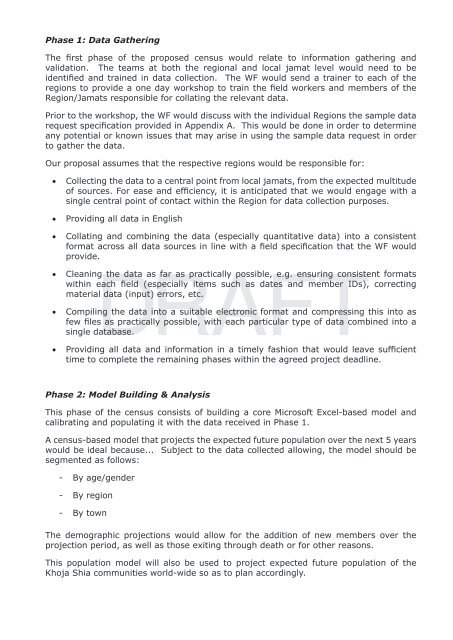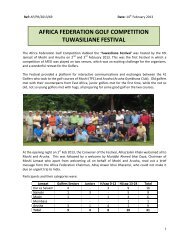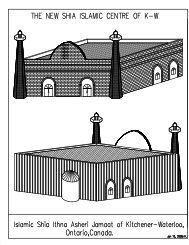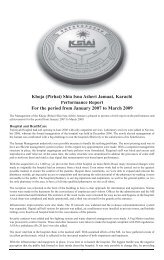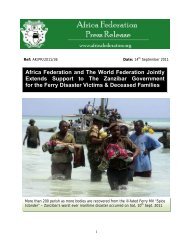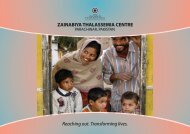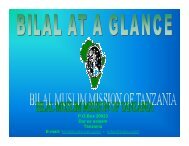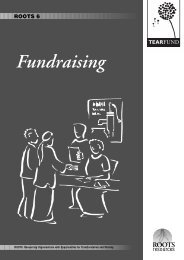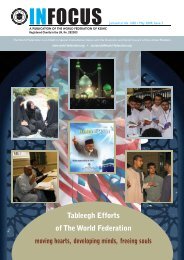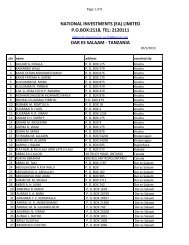Generation Plan Appendix 1 - The World Federation of KSIMC
Generation Plan Appendix 1 - The World Federation of KSIMC
Generation Plan Appendix 1 - The World Federation of KSIMC
Create successful ePaper yourself
Turn your PDF publications into a flip-book with our unique Google optimized e-Paper software.
Phase 1: Data Gathering<br />
<strong>The</strong> first phase <strong>of</strong> the proposed census would relate to information gathering and<br />
validation. <strong>The</strong> teams at both the regional and local jamat level would need to be<br />
identified and trained in data collection. <strong>The</strong> WF would send a trainer to each <strong>of</strong> the<br />
regions to provide a one day workshop to train the field workers and members <strong>of</strong> the<br />
Region/Jamats responsible for collating the relevant data.<br />
Prior to the workshop, the WF would discuss with the individual Regions the sample data<br />
request specification provided in <strong>Appendix</strong> A. This would be done in order to determine<br />
any potential or known issues that may arise in using the sample data request in order<br />
to gather the data.<br />
Our proposal assumes that the respective regions would be responsible for:<br />
• Collecting the data to a central point from local jamats, from the expected multitude<br />
<strong>of</strong> sources. For ease and efficiency, it is anticipated that we would engage with a<br />
single central point <strong>of</strong> contact within the Region for data collection purposes.<br />
• Providing all data in English<br />
• Collating and combining the data (especially quantitative data) into a consistent<br />
format across all data sources in line with a field specification that the WF would<br />
provide.<br />
• Cleaning<br />
DRAFT<br />
the data as far as practically possible, e.g. ensuring consistent formats<br />
within each field (especially items such as dates and member IDs), correcting<br />
material data (input) errors, etc.<br />
• Compiling the data into a suitable electronic format and compressing this into as<br />
few files as practically possible, with each particular type <strong>of</strong> data combined into a<br />
single database.<br />
• Providing all data and information in a timely fashion that would leave sufficient<br />
time to complete the remaining phases within the agreed project deadline.<br />
Phase 2: Model Building & Analysis<br />
This phase <strong>of</strong> the census consists <strong>of</strong> building a core Micros<strong>of</strong>t Excel-based model and<br />
calibrating and populating it with the data received in Phase 1.<br />
A census-based model that projects the expected future population over the next 5 years<br />
would be ideal because... Subject to the data collected allowing, the model should be<br />
segmented as follows:<br />
- By age/gender<br />
- By region<br />
- By town<br />
<strong>The</strong> demographic projections would allow for the addition <strong>of</strong> new members over the<br />
projection period, as well as those exiting through death or for other reasons.<br />
This population model will also be used to project expected future population <strong>of</strong> the<br />
Khoja Shia communities world-wide so as to plan accordingly.


